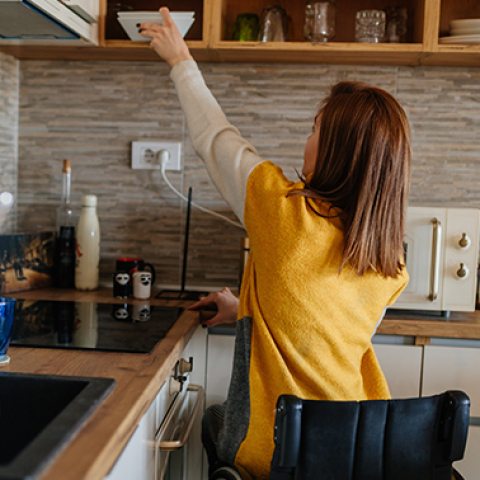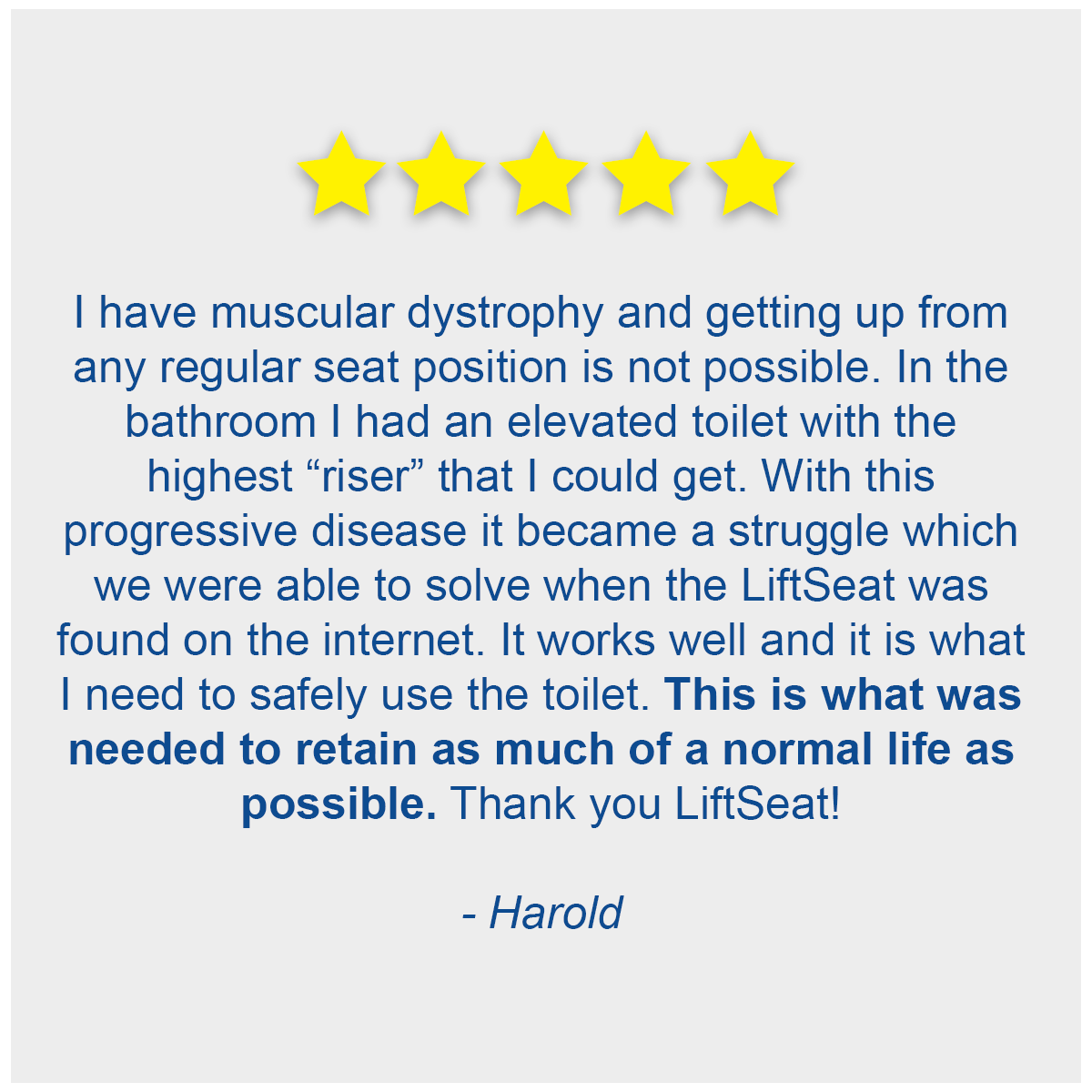Helpful Home Modifications for Muscular Dystrophy
09/26/2023
There are an estimated 250,000 people in the US currently living with one of 30 different types of muscular dystrophy.1 Every case is different, but most people with MD require modifications in their home environment to make day-to-day activities possible, with or without the help of a caregiver.
Some families may choose to build a new home to maximize accessibility. Building from the ground up gives a lot of flexibility in creating an accessible design but is also expensive and not financially feasible for many. There are some home modifications and adaptive equipment, however, that can make a big impact at a lesser cost.2
Come Up with a Plan
Before starting renovations or purchasing equipment, it’s important to consult with your health care providers. They can advise on what’s most important for everyday function, so you can prioritize which projects need to be done immediately, and which ones can wait. They may also have specific recommendations on which products/modifications other patients find most helpful.
You should also look into financial assistance, because even small renovations can add up. In addition to government funding that you may qualify for, there are several organizations that can help pay for equipment, home modifications, and more. Here is a list of assistance that may be available to you.
Make Room to Move
For wheelchair users, having room to comfortably maneuver is crucial. Widening doorways is one of the simplest ways to gain more room. Depending on the doorway, you may be able to widen it an inch or two by removing the surrounding molding or installing a special hinge (called an offset hinge) that allows the door to swing open more fully.2
Many families also find a roll-in shower to make a big difference. Adding a shower like this requires significant construction, so it’s not doable for everyone, but it’s definitely worthwhile for those who can. Barbara, who lives with McArdle Disease and received financial assistance from the Muscular Dystrophy Family Foundation to update her bathroom, shared “I sat in the bathroom after it was done and just cried with joy. Now I can get in and out of the shower without assistance. I’m so grateful…”3
Get the Proper Support
If you can’t do a complete bathroom renovation, a bath lift is a good option.2 These lifts can range in price significantly, but don’t be tempted to go straight for the cheapest option. They can operate very differently, so you will need to make sure you get one that provides the level of support you need. Some lifts only make standing/sitting in the tub easier, while others can assist with getting into/out of the tub as well.
Support is crucial for toilet use too. Regardless of whether you choose to renovate the bathroom, you should invest in a power toilet lift. A good toilet lift not only makes using the toilet easier (for both caregivers and recipients), it allows for more privacy and independence where it’s most needed.
Look for a free-standing toilet lift – these lifts are easier to install and are usually sturdier than ones that attach to the toilet (plus they won’t damage your existing toilet). LiftSeat makes one of the most compact lifts on the market, fitting into nearly any bathroom space. They are also the most versatile and customizable power toilet lifts, accommodating a wide range of heights and offering flexibility in important features like seat tilt. LiftSeat also has a 5-star rating with the Better Business Bureau and stands behind their products with an excellent warranty and customer service program.

Don’t Forget the Little Things
Big improvements in daily life can come from some of the smallest changes. Changing out hardware on doors, drawers and cabinets is an easy and inexpensive fix. Grab bars/handrails are another easy-to-install aid and can be moved based on changing needs.
You should also rethink how you organize everything. Keep the items you use the most (and those that are harder to lift) in easy reach. This goes for kitchens, bathrooms and closets. As the occupational therapy coordinator at Carolinas HealthCare System says, “There’s no rule saying you can’t have glasses in a bottom drawer. You need to organize things the way they work, not the way you think they should be.”4
Do What Works for You
At the end of the day, you need do what works for you and your family. You should openly discuss your situation with your healthcare providers to develop a list of options. Then you and your family can decide what the priorities are and develop a plan that works for everyone.
References:
- Pfizer. (n.d.). Duchenne Muscular Dystrophy. Pfizer Inc. https://www.pfizer.com/disease-and-conditions/duchenne-muscular-dystrophy
- Millard, E. (2022, November 9). Accessible Living: The Comforts of Home. Muscular Dystrophy Association. https://www.mda.org/quest/article/accessible-living-the-comforts-of-home
- Muscular Dystrophy Family Foundation. (n.d.). Support & Services. Muscular Dystrophy Family Foundation. https://www.mdff.org/support-and-services
- Millard, E. (2017, April 14). Home, Sweet Modified Home. Muscular Dystrophy Association. https://www.mda.org/quest/article/home-sweet-modified-home
This content is not intended to be a substitute for professional medical advice, diagnosis, or treatment. Always seek the advice of your physician or other qualified health provider with any questions you may have regarding a medical condition.